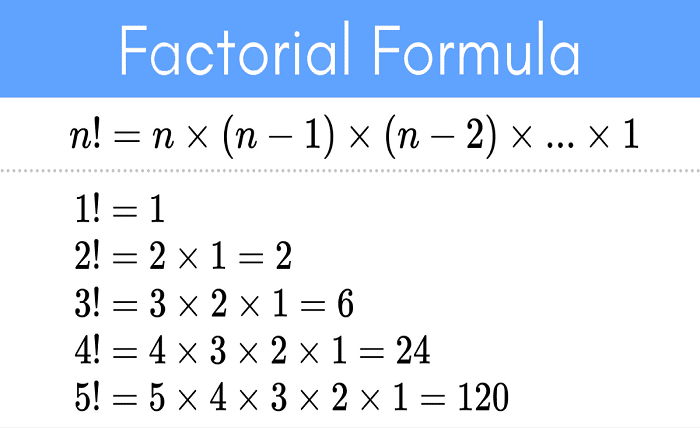What is the Factorial of 100: A Complete Guide to This Massive Number

What is the Factorial of 100: Basic Concept Explained
To understand what is the factorial of 100, we first need to grasp the general concept of a factorial. A factorial, symbolized by an exclamation point (!), is the product of all positive integers less than or equal to a given number. So, what is the factorial of 100? It is the product of all the integers from 1 to 100, written as 100!. That is, 100! = 100 × 99 × 98 × … × 1. The number is astronomically large and cannot be easily expressed in a typical calculator without scientific notation or programming tools. Understanding what is the factorial of 100 begins with this foundational knowledge of multiplication across sequential numbers.
What is the Factorial of 100: The Exact Value and Scientific Notation
The question “what is the factorial of 100” leads us to a truly enormous number. The exact value of 100! is:
93326215443944152681699238856266700490715968264381621468592963895217599993229915608941463976156518286253697920827223758251185210916864000000000000000000000000
Due to its size, mathematicians often use scientific notation to express what is the factorial of 100. In scientific notation, 100! is approximately:
9.33262154439441 × 10¹⁵⁷
This means what is the factorial of 100 is not just a concept but an extremely large value used in many high-level mathematical computations.
What is the Factorial of 100: How to Calculate It
To determine what is the factorial of 100, you can’t just multiply the numbers manually. Instead, mathematicians and programmers use efficient algorithms or libraries in programming languages like Python, Java, or MATLAB. In Python, for example, you can use:
import math
print(math.factorial(100))
This quickly gives us what is the factorial of 100 without the hassle of manual computation. Since the factorial function grows very fast, calculating what is the factorial of 100 is an intensive operation requiring precision and memory.
What is the Factorial of 100: Real-World Applications
You might wonder, what is the factorial of 100 used for in the real world? Despite its size, it finds application in various fields:
- Combinatorics: In problems involving permutations and combinations, what is the factorial of 100 can help determine the number of ways to arrange or select objects.
- Probability: In probability theory, what is the factorial of 100 helps in calculating complex probability scenarios.
- Cryptography: Understanding what is the factorial of 100 is valuable in developing secure encryption systems.
- Mathematical Research: Many research papers and mathematical proofs utilize what is the factorial of 100 in theoretical models.
Each of these applications highlights how essential it is to comprehend what is the factorial of 100 in practical scenarios.
What is the Factorial of 100: Growth Comparison With Other Numbers
When you compare what is the factorial of 100 with factorials of smaller numbers like 10!, 20!, or even 50!, you notice an exponential explosion in the value:
- 10! = 3,628,800
- 20! = 2.432902008 × 10¹⁸
- 50! = 3.04140932 × 10⁶⁴
- 100! = 9.33262154439441 × 10¹⁵⁷
This shows how rapidly the factorial function increases. So when we ask, what is the factorial of 100, we’re diving into the realm of extraordinarily large numbers. The sheer size of what is the factorial of 100 places it beyond ordinary computation and emphasizes its use in higher-order mathematical problems.
What is the Factorial of 100: How Computers Handle It
Considering the massive size of what is the factorial of 100, standard calculators often fall short in handling it. That’s where computers and specific programming languages come in. Languages like Python, C++, and Java can compute what is the factorial of 100 using recursive or iterative functions, or by calling built-in libraries. For example, Python’s math.factorial() or libraries like NumPy and SymPy are frequently used to find what is the factorial of 100 efficiently.
In cloud computing and big data systems, what is the factorial of 100 can be calculated with high precision, especially when needed for simulations, modeling, or research tasks. Thus, what is the factorial of 100 becomes a computable entity thanks to modern technology.
What is the Factorial of 100: Fascinating Mathematical Insights
What is the factorial of 100 isn’t just a huge number—it reveals insights into number theory and combinatorics. For instance:
- Trailing Zeros: One way to explore what is the factorial of 100 is by calculating how many zeros appear at the end of it. This is done by counting how many times 5 appears in the factors of 100.
⌊1005⌋+⌊10025⌋+⌊100125⌋=20+4+0=24\left\lfloor \frac{100}{5} \right\rfloor + \left\lfloor \frac{100}{25} \right\rfloor + \left\lfloor \frac{100}{125} \right\rfloor = 20 + 4 + 0 = 24So, what is the factorial of 100 has 24 trailing zeros.
- Digit Count: What is the factorial of 100 has 158 digits, showcasing how quickly the factorial function escalates.
- Prime Factorization: Decomposing what is the factorial of 100 into its prime factors is complex but insightful for understanding its divisibility properties.
Such mathematical analyses of what is the factorial of 100 reveal its richness beyond just being a large number—it becomes a subject of exploration and wonder.
Conclusion
In conclusion, what is the factorial of 100 isn’t merely a question with a gigantic number as its answer. It encapsulates a critical mathematical concept that’s central to fields such as statistics, data science, cryptography, and even artificial intelligence. The factorial of 100 represents not only the exponential nature of multiplicative sequences but also highlights the incredible computational power required to manage such calculations.
From calculating permutations to solving real-world complex problems, what is the factorial of 100 demonstrates the importance of large-number arithmetic. With the help of computer science and mathematics, we now have tools to compute and apply this number across multiple domains. Understanding what is the factorial of 100 equips learners, programmers, and researchers with knowledge that stretches far beyond the realm of ordinary mathematics.
FAQs
Q1: What is the factorial of 100 in simple terms?
In simple terms, what is the factorial of 100 means multiplying all numbers from 1 to 100 together. The result is a huge number with 158 digits.
Q2: Why is what is the factorial of 100 important?
What is the factorial of 100 is important for solving advanced problems in combinatorics, probability, cryptography, and algorithm design.
Q3: How do I compute what is the factorial of 100 using Python?
To compute what is the factorial of 100, use math.factorial(100) in Python’s math library for accurate results.
Q4: How many zeros are in what is the factorial of 100?
What is the factorial of 100 has 24 trailing zeros, found by counting the multiples of 5 in the range from 1 to 100.
Q5: Is what is the factorial of 100 used in real life?
Yes, what is the factorial of 100 is used in real life in statistics, permutations, simulations, and data science tasks requiring large computations.





